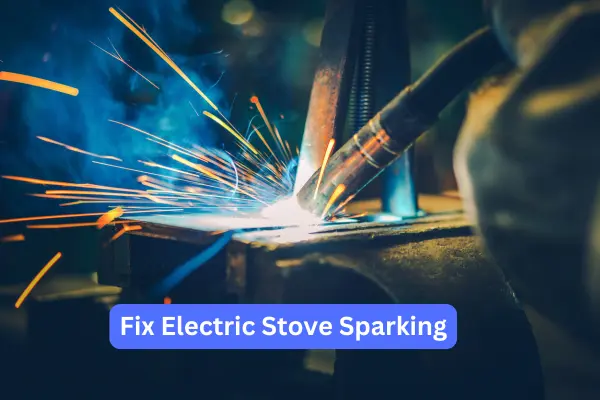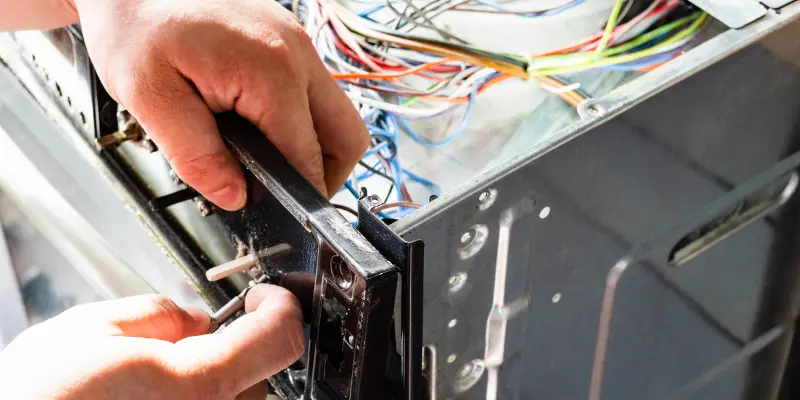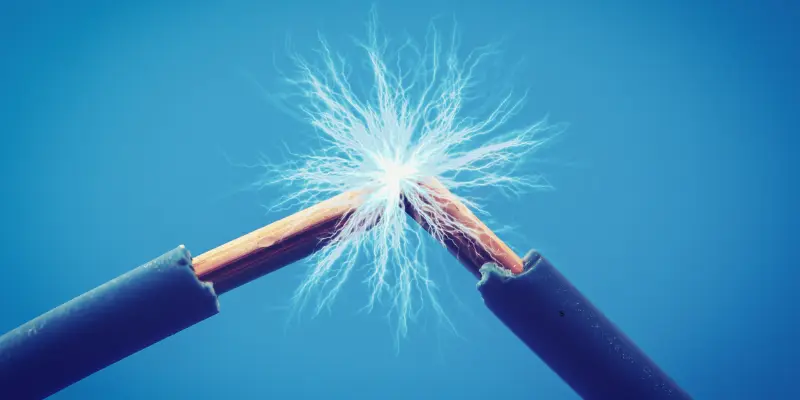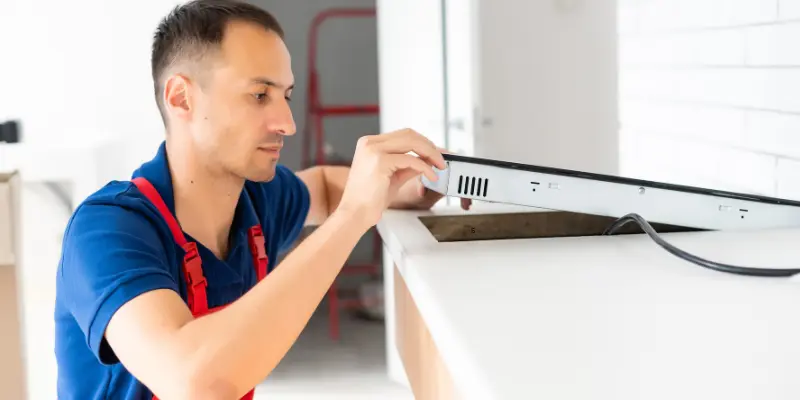How to Fix Electric Stove Sparking: Step-by-Step Guide
Updated: 12 Jul 2025
227
Ever seen sparks fly from your electric stove and felt a jolt of panic? You’re not alone. A sparking stove might seem harmless at first, but it can quickly become a serious fire hazard if ignored.
A spark from your stove plug, burner coil, or damaged socket usually means there’s a problem with the wiring, the coil, or even built-up grease. It could be something simple—or it could signal a hidden danger.
“Most fires don’t start with a flame. They start with a worn wire or ignored spark.” – Certified Appliance Repair Technician
In this post, you’ll learn how to fix electric stove sparking safely and quickly, why your electric stove is sparking, how to spot early signs, and steps to prevent it from happening again.
Why Is My Electric Stove Sparking?

A sparking electric stove is never a good sign. But before you panic, let’s break it down.
Several issues can trigger sparks—some simple, others more serious. The most common cause is a loose stove coil. You may also see sparks if there’s grease buildup, moisture in the socket, or a damaged terminal block.
“When a spark appears, it’s electricity looking for a safer path. That’s your cue to fix the path before it finds one you won’t like.” – Licensed Appliance Electrician
So, why is my electric stove sparking? The answer depends on the coil, receptacle, and internal wiring. It’s best to inspect all three before using the stove again.
Is It Dangerous If My Stove Sparks?
Yes. Any kind of spark from an electric stove is a safety hazard.
Even a small spark can start a fire or cause a short circuit. If your electric stove coil is sparking, it could lead to damaged wiring, melted connectors, or worse—an electric shock.
Using a sparking stove is risky. It might work today, but tomorrow it could blow the fuse or burn your socket. If the burner terminal block is sparking, that’s an early sign that parts are overheating.
Here’s why you should never ignore sparks:
- Sparks can ignite grease or nearby items.
- They can melt wires inside the wall and damage your stove’s control board.
- Repeated sparks can trip your circuit breaker.
According to the U.S. Consumer Product Safety Commission, thousands of household fires start from faulty stoves every year. Many begin with “minor” sparks.
Diagnosing the Problem: What to Look For
Before you fix anything, you need to diagnose the cause of the electric stove sparking. Here’s a detailed checklist to help you:

1. Look at the Coil Element
- Turn off your stove and wait for it to cool completely.
- Gently remove the coil element from its socket.
- Check for signs of:
- Cracks
- Burn marks
- Corrosion or rust
- Uneven or bent shape
2. Inspect the Burner Receptacle (Socket)
- This is where the coil plugs in.
- Look inside for black marks, melted plastic, or burnt smells.
- Wiggle the coil while inserted—if it’s loose, it needs replacing.
3. Check for Grease or Moisture Build-Up
- Remove any food debris, liquid spills, or grease that may have dripped onto the receptacle.
- Moisture or oil inside the socket can short-circuit the coil and create sparks.
4. Inspect the Power Cord and Plug
- Pull the stove slightly forward and examine the stove plug and cord.
- If you notice:
- Heat discoloration
- Burnt odor
- Frayed insulation
5. Check for Wiring Damage (Advanced)
If you’re comfortable opening the back panel of the stove:
- Unplug the unit and unscrew the back cover.
- Look for:
- Rodent damage
- Melted insulation
- Exposed wires
- Burn marks on the inner metal casing
- Any of these are classic stove wiring damage signs and should be repaired by a technician.
Common Causes of Electric Stove Sparking
Now that you’ve inspected your stove, let’s break down the most common causes of sparking one by one.
1. Loose or Damaged Coil Element
Symptoms:
- The coil wiggles or doesn’t sit evenly
- Sparks shoot out when turning the burner on
- The coil turns red unevenly
Solution:
- Remove the coil
- Clean the socket
- Replace the coil
2. Grease, Oil, or Moisture in Receptacle
- Leftover cooking residue or spilled liquid can build up in the burner socket.
- When electricity runs through it, it arcs through the grease, causing a spark.
Solution:
- Turn off power to the stove
- Gently clean the socket with a dry brush or cloth
- Never use water or liquid cleaners inside the socket
3. Damaged Burner Terminal Block
Signs:
- Black or brown melted plastic
- Burning smell
- Receptacle feels soft or deformed
Fix:
Replace the terminal block. You can find replacement kits online or in stores for around $15–$30.
4. Faulty Wiring Behind the Stove

How to Know:
- Circuit breakers trip often
- The Stove heats unevenly or won’t turn on
- Sparks from behind the stove, not the coil
Recommendation:
Call a licensed appliance electrician. Fixing hidden stove wiring damage without training is risky.
5. Overloaded Circuit or Outlet Problems
This happens when:
- The outlet is worn out
- Too many appliances run on the same line
- Voltage mismatches are present
Fix:
- Unplug other high-powered devices on the same circuit
- Replace the outlet if it’s old or scorched
- Hire an electrician to check voltage ratings
Learn more about safe kitchen outlet setups at the National Electrical Code (NEC).
How to Fix Electric Stove Sparking (Step-by-Step Guide)
This guide is designed for DIY fixes that are safe for beginners. If the issue goes beyond what’s listed here, call a certified technician.

Warning: Always unplug your stove or turn off the circuit breaker before beginning any repairs.
Step 1: Turn Off the Power
- Unplug your stove from the wall.
- If hardwired, shut off power from the breaker box.
- This step ensures your safety and prevents electric shock.
Step 2: Remove and Inspect the Coil Element
- Pull out the coil burner carefully.
- Examine it for cracks, rust, or burn marks.
- Replace the coil if it looks worn out or broken.
Step 3: Clean the Receptacle (Burner Socket)
- Use a dry cloth or soft brush to clean out food debris or grease.
- Never use water or liquid spray cleaners inside the socket.
- Dirt and moisture are common causes of electric stove coil sparking.
Step 4: Check the Terminal Block
- Look for melted plastic or black marks in the socket.
- A stove burner terminal block sparking means the socket is no longer safe.
- Replace it using a terminal block replacement kit (available at most hardware stores).
Step 5: Test and Secure the Coil Connection
- After cleaning or replacing, reinsert the coil.
- Make sure it sits tightly in the receptacle.
- A loose stove coil is a major cause of arcing and sparks.
Step 6: Replace Faulty Wiring (If Needed)
- This is only for advanced users.
- Open the back panel and inspect for stove wiring damage signs like frayed wires.
- Use heat-resistant wire connectors and electrical tape to repair small sections.
- For anything complex, call a licensed electrician.
Final Step: Power On and Test
- Restore power to your stove.
- Turn on the burner briefly and check for sparks.
- If the spark from stove plug or coil continues, unplug and contact a technician.
| Safety Tip |
|---|
If you’re unsure at any point, it’s better to stop and get help from a certified technician. Safety first. |
Should You Fix or Replace Your Stove?
When to Repair Your Stove
- The coil is loose or cracked
- The burner socket is dirty
- The terminal block is slightly melted
- You have the tools and confidence for DIY repair
When to Replace Your Stove
- Sparks continue after multiple coil replacements
- The control board or wiring harness is damaged
- There’s internal short-circuiting
- Your stove is 10+ years old and has other issues
- You notice frequent sparks from the stove plug or burning smells
Repair vs. Replace: Quick Comparison
| Situation | Recommended Action |
|---|---|
| Loose coil only | Repair |
| Socket burnt and coil damaged | Repair or Replace Parts |
| Sparking from back panel or control board | Replace Stove |
| The stove is 12+ years old | Replace Stove |
| Stove is 12+ years old | Replace Stove |
Need help choosing a safe new electric stove? Visit our expert buying guide:
Best Electric Stove: How To Choose
Electric Stove Maintenance to Prevent Sparking
Here’s how to keep your electric stove working safely for years.
1. Clean the Burner Area Regularly
- Avoid liquids near hot coils
- Use a dry brush to clean inside burner sockets every week
2. Inspect Coils Monthly
- Remove each coil burner
- Look for cracks, rust, or bends
- Replace coils every 12–18 months for best performance
3. Check Burner Sockets
- If the burner terminal block is sparking, it’s worn out
- Burnt or melted sockets must be replaced
4. Don’t Overload Outlets
- Avoid using extension cords with stoves
- Hire an electrician to inspect the connection regularly every 2–3 years
Want more maintenance tips? Read 11 Practical Care and Maintenance Tips for Electric Stoves
FAQs
Is it safe to use a stove that sparks?
No. Any sparking stove should be turned off and inspected. Even small sparks can lead to electrical fires.
What should I do if the spark comes from the plug?
Unplug the stove immediately. This indicates a wiring or outlet issue. Call an electrician before using the stove again.
Can power surges cause my stove to spark?
Yes. Sudden voltage spikes can damage the control board or coil connections, leading to sparks. Use a surge protector for large appliances.
Can a sparking stove cause a fire?
Yes. Especially if grease or faulty wiring is involved. Stop using it immediately and get it inspected.
Final Thoughts
Sparking in electric stoves isn’t normal, and it’s never safe.
It often starts with a loose stove coil, a dirty burner socket, or damaged internal wiring.
If you notice sparks from your stove, don’t ignore them. A sparking electric stove can be dangerous and may lead to fires. In this guide, you learned how to fix an electric stove sparking by checking loose coils, cleaning dirty sockets, and inspecting damaged parts.
Keep your stove clean, inspect it often, and never cook on a burner that sparks. Prevention is always safer and cheaper than repairs.
References
https://www.geappliances.com/ge/parts
Please Write Your Comments